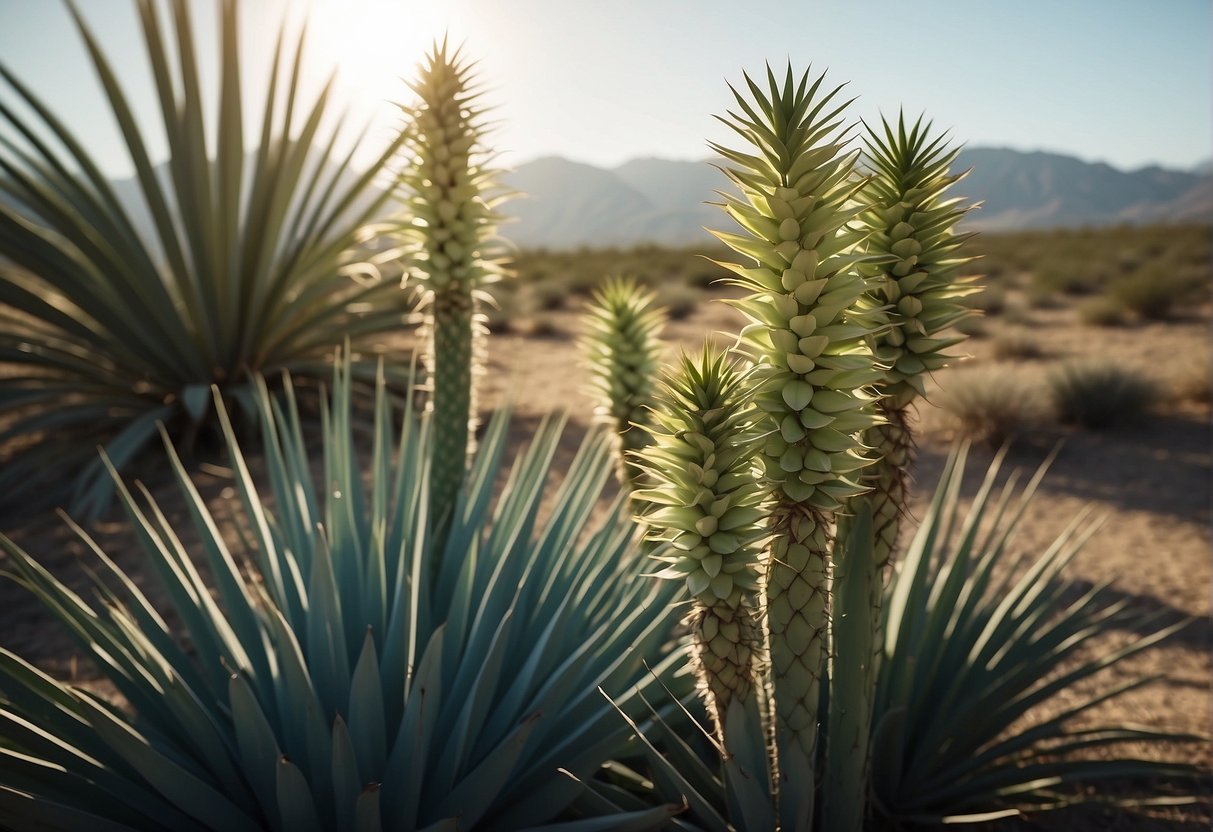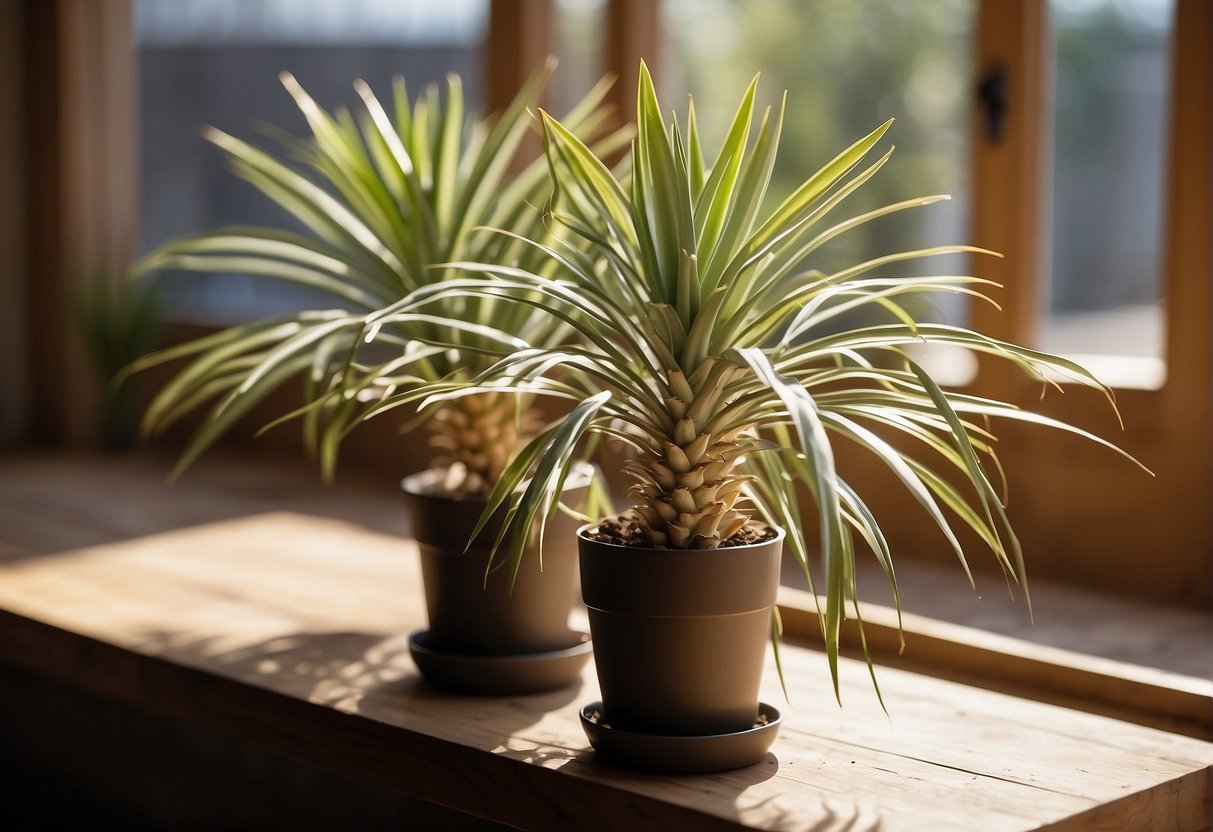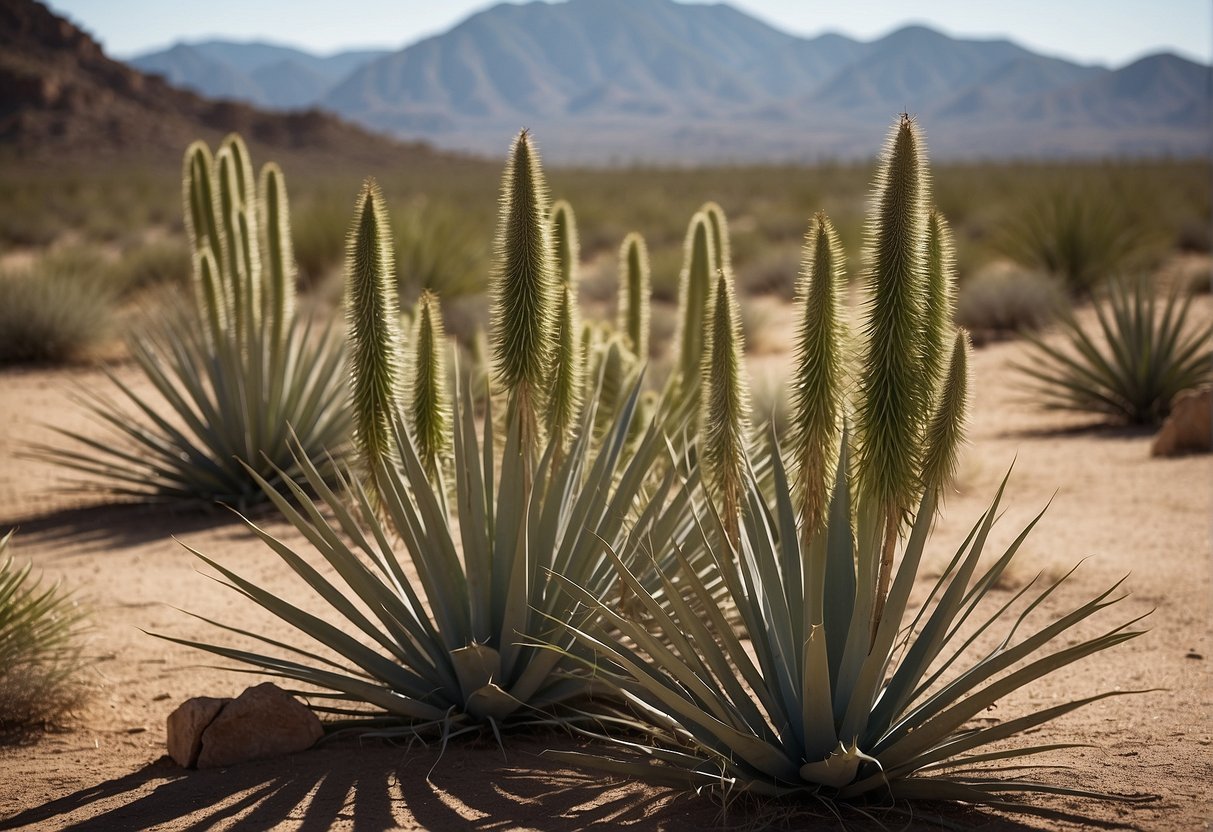If you’re wondering why your yucca plants are not looking as healthy as they should be, there could be several reasons. Yucca plants are known for their hardiness and ability to thrive in a variety of conditions, but they still require proper care and maintenance to stay healthy. In this article, we’ll explore some common issues that can affect the health of your yucca plants and provide tips on how to keep them looking their best.

Understanding Yucca Plant Health Issues
Yucca plants can suffer from a range of health issues, including root rot, pest infestations, and nutrient deficiencies. Root rot is a common problem that occurs when the soil around the roots becomes waterlogged, leading to fungal growth and decay. Pest infestations, such as mealybugs and spider mites, can also damage yucca plants by feeding on the leaves and stems. Nutrient deficiencies, particularly of nitrogen and iron, can cause the leaves to turn yellow and stunt growth.
Proper Yucca Plant Care and Maintenance
To keep your yucca plants healthy, it’s important to provide them with the right growing conditions and care. Yucca plants prefer well-draining soil and bright, indirect sunlight. They can tolerate drought conditions but should be watered deeply and allowed to dry out between waterings. Regular fertilization with a balanced fertilizer can help prevent nutrient deficiencies, and pruning can help control pest infestations and promote healthy growth.
Key Takeaways
- Yucca plants can suffer from root rot, pest infestations, and nutrient deficiencies.
- Proper care and maintenance, including well-draining soil, bright indirect sunlight, and regular watering and fertilization, can help keep yucca plants healthy.
- Pruning can help control pest infestations and promote healthy growth.
Understanding Yucca Plant Health Issues

Yucca plants are known for their hardy nature and ability to thrive in harsh conditions, but they can still experience health issues. Understanding the common problems that yucca plants face can help you identify and address any issues that arise.
Watering and Soil Requirements
Proper watering and soil conditions are essential for maintaining the health of your yucca plant. Yucca plants prefer well-drained soil, and overwatering can lead to root rot and other issues. On the other hand, underwatering can cause wilting leaves and leaf drop.
To ensure optimal soil conditions, make sure to use a well-draining soil mix and only water your yucca plant when the top inch of soil feels dry to the touch. It’s also important to avoid getting water on the leaves, as this can lead to sunburn and other issues.
Light and Temperature Factors
Yucca plants prefer bright, direct sunlight, but they can also tolerate low light and partial shade. However, too much direct sunlight can cause heat stress and sunburn, while too little light can lead to leggy growth and other issues.
In terms of temperature, yucca plants can tolerate a wide range of conditions but prefer warm temperatures between 60 and 80 degrees Fahrenheit. Extreme temperature fluctuations can cause stress and other health issues.
Pests and Diseases
Like all plants, yucca plants are susceptible to pests and diseases. Common pests that can affect yucca plants include aphids, scale, mealybugs, and spider mites. Fungal diseases like root rot and other diseases can also affect the health of your yucca plant.
To prevent pest and disease issues, make sure to keep your yucca plant clean and free of debris. You can also use natural pest control methods like neem oil or insecticidal soap to control pests. If you notice signs of disease, it’s important to address the issue promptly to prevent further damage to your plant.
Proper Yucca Plant Care and Maintenance
If you want your Yucca plants to thrive, there are a few things you should keep in mind when it comes to their care and maintenance. In this section, we’ll cover the optimal fertilization, pruning and repotting, and seasonal care considerations for your Yucca plants.
Optimal Fertilization
Yucca plants are drought-tolerant succulents, which means they don’t need a lot of water or fertilizer. In fact, too much fertilizer can actually harm your Yucca plants and lead to overfertilization. When fertilizing your Yucca plants, it’s important to use a balanced fertilizer with equal amounts of nitrogen, phosphorus, and potassium. Avoid fertilizers that are high in phosphorus, as this can lead to excessive growth of the stalks and trunks and inhibit flower production.
Pruning and Repotting
Pruning is an important part of Yucca plant care and maintenance. It’s important to prune your Yucca plants regularly to promote new growth and remove any dead or damaged leaves. When pruning your Yucca plants, use sharp scissors or pruning shears to make clean cuts. Avoid tearing or ripping the leaves, as this can damage the plant.
Repotting your Yucca plants is also important to ensure they have enough room to grow. When repotting, make sure to use a container with drainage holes to prevent water from pooling at the bottom. If your Yucca plant is experiencing transplant shock after being repotted, give it time to adjust and recover before watering it again.
Seasonal Care Considerations
Yucca plants are evergreen and can be grown year-round, but they do require different care depending on the season. During the growing season, which is typically from spring to fall, your Yucca plants will require more water and fertilizer. However, during the winter months, they will require less water and fertilizer as they enter a dormant period. It’s important to monitor your Yucca plants closely during these times to make sure they are getting the care they need.
Overall, proper care and maintenance of your Yucca plants is essential to ensure they stay healthy and produce blooms. By following these tips for optimal fertilization, pruning and repotting, and seasonal care considerations, you can help your Yucca plants thrive for years to come.
Frequently Asked Questions

Why is my yucca plant’s leaves turning yellow?
Yellow leaves on a yucca plant can be caused by a variety of factors, including overwatering, underwatering, nutrient deficiencies, or pest infestations. It’s important to identify the underlying cause of the yellowing leaves in order to properly treat the issue. Check the soil moisture level, adjust your watering schedule if necessary, and consider adding fertilizer to the soil. If you suspect a pest infestation, inspect the plant closely and treat with an appropriate insecticide.
How can I tell if my yucca plant is overwatered?
Overwatering is a common issue with yucca plants, and can lead to root rot and other problems. Signs of overwatering include yellowing leaves, wilting, and a mushy or rotten smell coming from the soil. To prevent overwatering, make sure the soil is well-draining and allow the soil to dry out slightly between waterings.
What are the common signs of diseases in yucca plants?
Yucca plants can be susceptible to a variety of diseases, including fungal infections and bacterial blight. Common signs of disease include yellowing or browning leaves, wilting, and spots or lesions on the leaves. To prevent disease, make sure your yucca plant is planted in well-draining soil and avoid overwatering.
Why are the tips of my yucca plant’s leaves turning brown?
Brown tips on yucca plant leaves can be caused by a variety of factors, including dry air, over-fertilization, or pest infestations. To prevent brown tips, make sure the plant is in a location with sufficient humidity, avoid over-fertilizing, and inspect the plant for pests.
How do I identify and treat root rot in yucca plants?
Root rot is a common issue with yucca plants, and can be caused by overwatering or poor drainage. Signs of root rot include wilting, yellowing leaves, and a foul smell coming from the soil. To treat root rot, remove the plant from its pot and inspect the roots. Cut away any damaged or rotten roots, replant the plant in fresh soil, and adjust your watering schedule to prevent overwatering.
What should I do if my yucca plant is wilting or drooping?
Wilting or drooping leaves on a yucca plant can be caused by a variety of factors, including underwatering, overwatering, or pest infestations. Check the soil moisture level and adjust your watering schedule if necessary. Inspect the plant for pests and treat with an appropriate insecticide if necessary.














